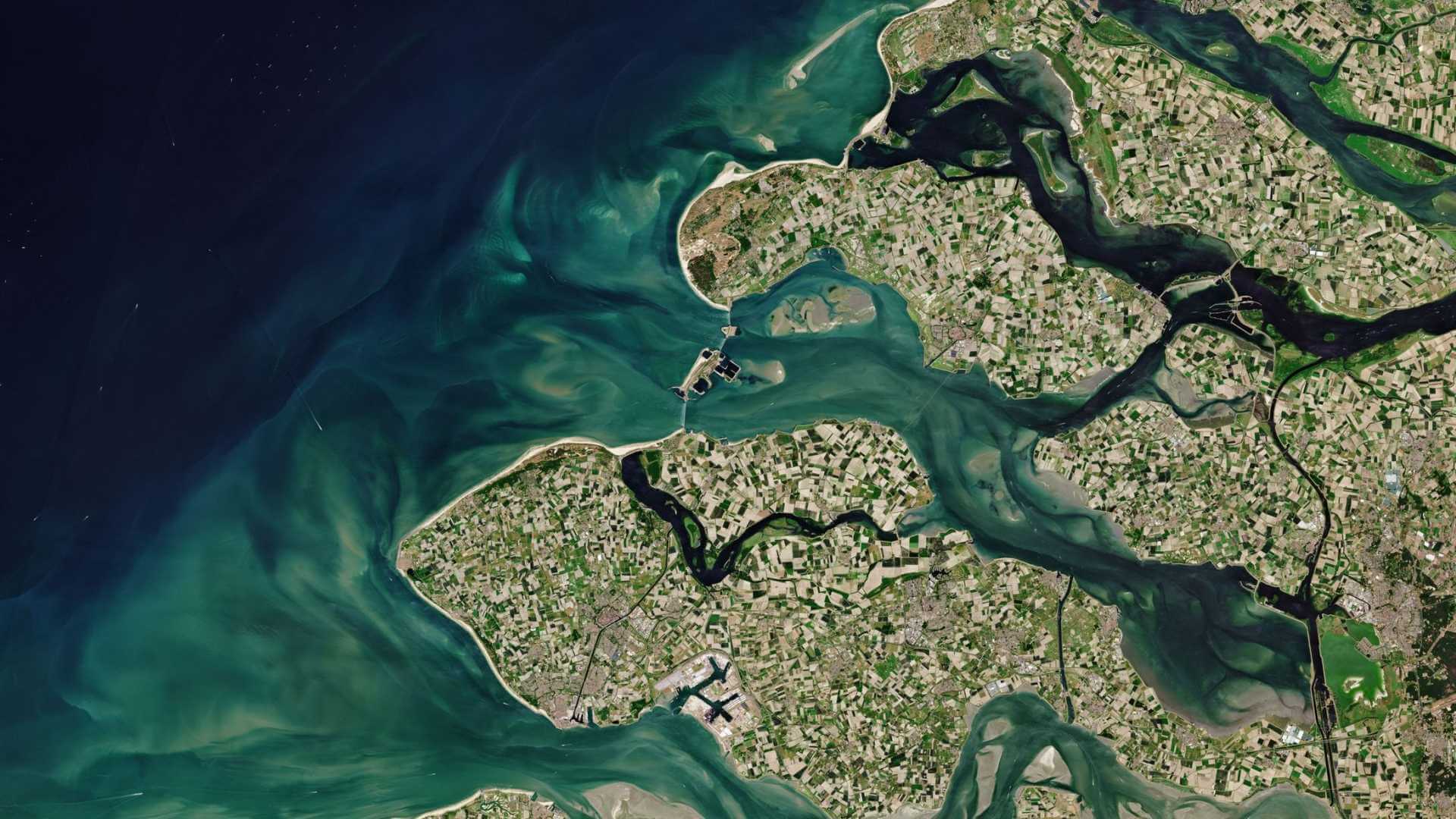About MOS-1/1B
The MOS (Marine Observation Satellite) Constellation, made up of MOS-1 and 1B, were Japan’s first marine observation satellites, owned and operated by the National Space Development Agency of Japan (NASDA), now JAXA (Japan Aerospace Exploration Agency). MOS-1 and 1B were launched in February 1987 and February 1990, and completed operations in November 1995 and April 1996, respectively.
| MOS-1 | MOS-1B | |
| Launch Date | 19 February 1987 | 7 February 1990 |
| End Date | 29 November 1995 | 17 April 1996 |
| Orbit Type | 909 km | 909 km |
| Orbit Period | 103 min | 103 min |
| Repeat Cycle | 17 days | 17 days |
| Inclination | 99.1° | 99.0° |
MOS-1/1B Objectives
MOS-1 and 1B, Japan’s first marine observation satellites, were designed to monitor ocean currents, sea surface temperature, atmospheric water vapour, ocean chlorophyll levels, precipitation, and land vegetation. They also acted as relays for data from remote surface sensor platforms.
Instruments
MESSR (Multi-spectral Electronic Self-Scanning Radiometer)
MESSR was a four-band pushbroom radiometer, with two visible (VIS) spectral bands and two near-infrared (NIR) bands, with a 50 m Ground Sample Distance (GSD) and a swath width of 100 km. For increased reliability of data, two copies of MESSR were onboard the spacecraft, each with swath widths of 100 km, yielding a combined swath width of 200 km. The instrument could achieve global coverage in 17 days.
| Spectral Band | 1 (VIS) | 2 (VIS) | 3 (VIS) | 4 (NIR) |
| Wavelength Range (nm) | 510 – 690 | 610 – 690 | 720 – 800 | 800 – 1100 |
| Spatial Resolution (m) | 50 | 50 | 50 | 50 |
| Swath Width (km) | 100 | 100 | 100 | 100 |
MSR (Microwave Scanning Radiometer)
MSR was a passive microwave radiometer with two channels operating at respective frequencies of 24 GHz and 31 GHz, and corresponding ground resolutions of 32 km and 23 km, providing global coverage in 5 days.
| Channel | 1 | 2 |
| Frequency (GHz) | 23.8 | 31.4 |
| Polarisation | Horizontal | Vertical |
| Spatial Resolution (km) | 32 | 23 |
| Swath Width (km) | 317 | 317 |
VTIR (Visible and Thermal Infrared Radiometer)
VTIR was a mechanical-scanning radiometer with a visible (VIS) spectral band, and three thermal infrared (TIR) bands. The instrument scanned cross-track swaths 1500 km wide, with along-track scans provided by the motion of the spacecraft. VTIR had a ground resolution of 0.9 km for the VIS band with daily global coverage, and 2.7 km for the TIR bands with global coverage in 2 days.
| Spectral Band | 1 (VIS) | 2 (TIR) | 3 (TIR) | 4 (TIR) |
| Wavelength Range (nm) | 0.5 – 0.7 | 6.0 – 7.0 | 10.5 – 11.5 | 11.5 – 12.5 |
| Spatial Resolution (m) | 0.9 | 2.7 | 2.7 | 2.7 |
| Swath Width (km) | 1500 | 1500 | 1500 | 1500 |
Data
DATA DESCRIPTION
ESA offers registered users access to the following MOS-1/1B data collections:

